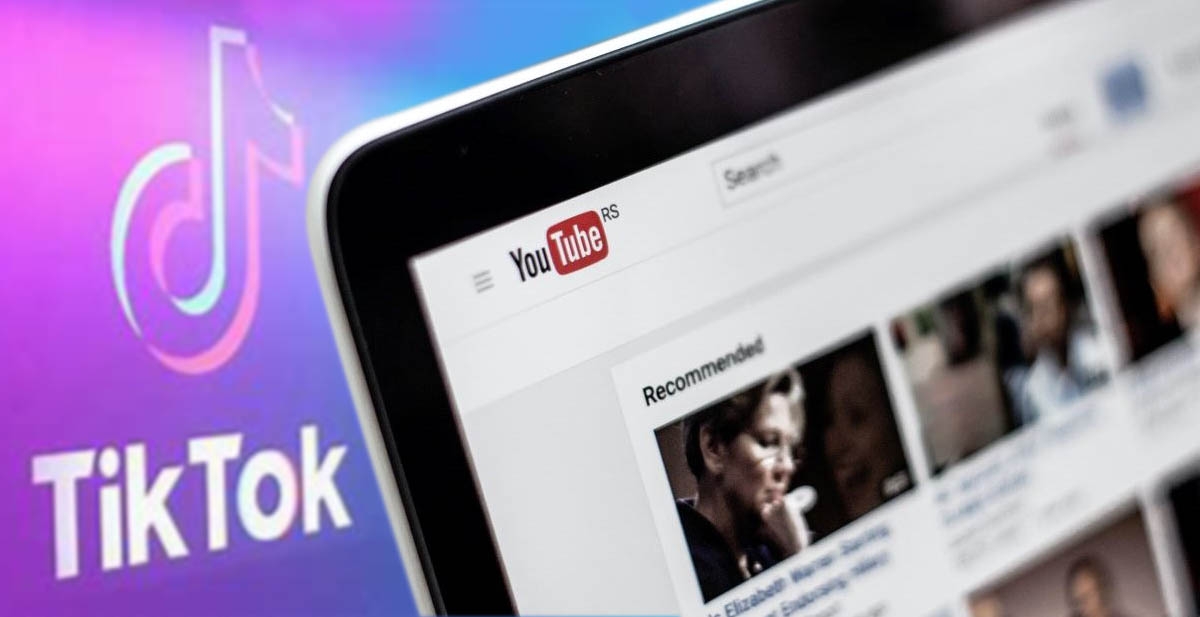
YouTube vs TikTok: Which platform is better for marketing?
If you own a business, video marketing can be a great way to build brand awareness.
As most marketers will tell you, video marketing is one of the most profitable and versatile forms of advertising. Recent statistics show that 63% of businesses have embraced video as a form of content marketing, and it’s easy to see why.
For starters, videos lead to more conversions compared to other forms of content. As one study reported, videos get 1200% more shares than images and text combined.
Further, videos are popular due to their ability to engage audiences across different platforms. Unlike other forms of marketing, videos quickly grab your audience's attention, as the human brain processes visuals 60,000 times faster than text.
Besides, videos are memorable, increasing brand recall. Not to mention that with a video, you can package an informative message in a way that will engage your audience.
It’s against this background that we compare the two most popular video hosting giants, YouTube and TikTok.
Looking at the two, YouTube is the veteran video platform that has been around for years, while TikTok is the fresh newcomer giving the alpha of video marketing a run for its money.
So, whether you’re struggling with getting subscribers and thinking of improving organic YouTube growth or you’re looking for creative ideas to improve your marketing on TikTok, this article is for you.
Hopefully, once you’re done reading, it will be easier for you to choose between YouTube and TikTok when it comes to your marketing needs.
YouTube
YouTube has been a veteran in the social media scene, having been founded in 2005. The platform is the second-largest search engine with over two billion active monthly users.
The popular video hosting site has a massive following as 95% of the global population uses YouTube. In a minute, more than 100 hours of video are uploaded on the platform.
YouTube was founded with the aim of sharing long-form video content. Viewers on the app can interact with the videos by liking, commenting, sharing, or subscribing to their favorite channels. Video creators can upload videos on the platform and also interact with their audience by replying to comments.
Another reason why YouTube is such a popular platform is that it’s a free-to-use service. As long as you have access to a mobile phone or a computer and an internet connection, you’re good to go. Besides, the platform is available in almost every country and can be accessed in more than fifty languages.
Due to the sheer number of videos on YouTube, there is always something new to watch. These videos are made by ordinary people like you and me, making them engaging and exciting.
TikTok
TikTok is a social media app that was founded in china in 2016. The platform allows users to create and share short creative videos of between 15 seconds to 3 minutes.
TikTok, also known as Douyin in its native Chinese market, started as Musica.ly before being taken over by ByteDance, its current owner. Today, TikTok is the fastest-growing social media app.
The latest studies show that more than one billion people globally are active users of TikTok. While these numbers may not be as impressive as YouTube’s, it’s essential to consider that this social media app was started only four years ago. Undoubtedly, TikTok's growth is impressive. In fact, by 2018, TikTok had surpassed YouTube, Instagram, Snapchat, and Facebook in monthly app store installations.
TikTok is considered one of Generation Z's favorite apps. More than 70 percent of active users on TikTok are aged between 16 and 24 years. The engagement on the app is also impressive, as the average TikToker spends more than 50 minutes on the app daily.
Its ease of use and fancy videos are what make TikTok so popular among the young audience. Geographically, most TikTok users are based in India, the USA, and Turkey, and of course, China, where it has more than 300 million users.
TikTok, which is often considered the bit-sized version of YouTube, allows users to create and share short mobile videos. The app also has video editing tools plus sound bites, effects, filters, and libraries of songs that users can add to their videos.
Users on the platform can scroll through their feed and watch personalized videos that are generated through the app’s AI algorithm. Users can also interact with videos by liking, commenting, or sharing them through different apps.
YouTube vs. TikTok
First, it’s important to mention that it's difficult to put these two video hosting sites on a level playing field as they don’t publish similar content. Besides, the data and metrics from the two apps are also different.
However, to help you choose the most suitable app for your marketing needs, here’s how the two compare under different marketing categories.
1. Reach
As mentioned earlier, YouTube wins hands down when it comes to the number of users. The platform has more than 2.3 billion active users, meaning almost half of the entire internet population uses YouTube. The average time spent on YouTube is 1 billion hours daily.
On the other hand, TikTok has more than 6.89 million active users, excluding Chinese users, as the app operates with a different name in China. 1.43 billion hours is the average time users spend watching videos on TikTok daily.
Despite YouTube having more users than TikTok, reach is something the latter app can deliver better. Since TikTokers spend more time on the app, it’s easier for your content to be easily discovered.
When considering reach, it’s also fair to look at the type of audience that these two video platforms attract. YouTube is popular with all kinds of audiences, as it has videos for everyone.
TikTok, on the other hand, has won the hearts of teenagers, as the average age of most TikTokers is between 16 and 24 years.
The variety of content that YouTube provides makes it a better platform when it comes to reaching different kinds of audiences.
However, if your target audience is GenZ and millennials, then you have a better chance of reaching them via TikTok.
2. Search and Exploration
YouTube is the second-largest search engine after its parent company Google. The app's appeal is that you can search for anything and find it. This is why it’s ideal for marketing content that is easily searchable.
For instance, if you intend to market videos that are tailored to a given search query, such as ‘how to make a YouTube video’ or ‘how to market your content on social media,’ then you’ll have more success on YouTube.
Besides, you won’t have to seek people to visit your videos on YouTube, as Google can do the marketing for you. Google often suggests YouTube videos to searchers based on their search queries.
Additionally, if your YouTube content goes viral, other websites may embed your video on their sites, which increases the lifespan of YouTube videos.
While it’s easy to search for anything on YouTube, the search function on TikTok works differently. To search content on TikTok, you’ll need to search using hashtags and user handles.
Besides, TikTok’s algorithm that fuels a user’s ‘for you’ feed makes it easy to find personalized content. The algorithm provides users with different videos that are curated to their interests, which is one reason the app is so addictive.
So, looking at the two apps, we can conclude that while TikTok focuses on the exploratory experience, YouTube focuses on the search experience.
3. Watch Time
As a marketer, you have to consider how much time you’ll need to tell a story to convince the customers to buy your products.
YouTube allows you to create long videos that can be hours in length. This means you have a better chance of promoting your brand and showcasing your products due to the long watch time.
TikTok is for short videos whose maximum length is three minutes. As a creator, this may not be enough for you to create in-depth or informative pieces of content.
Besides, since content often centers around a soundtrack on TikTok, it’s more challenging to fit in your product messaging.
4. Ease of Use
Although YouTube has been around for years, its content creation process isn’t easy. Unlike TikTok, YouTube creators can’t shoot videos on the app. Longer videos are also more popular on YouTube, meaning creators have to spend more on production to make great content.
TikTok has made the content creation process more streamlined. Thanks to the app, it’s now easier to create clips, add filters, and effects on the app. In as little as five minutes, it’s possible for creators to film, edit, and upload a video on TikTok.
The viewing experience is also more seamless on TikTok. Users get to watch videos curated to their interests immediately after they open the app. The videos continue to play as long as the user swipes through their feed. The videos on TikTok are also made to fit the entire screen, making the viewing more like a TV experience.
5. Audience
Both YouTube and TikTok have a vast following. The only difference is the type of audience.
YouTube videos cater to every type of audience, from kids to professionals. This means that if your target audience is made up of different demographics, you have a better chance of being successful on YouTube. Besides, you can post longer and more informative content on YouTube that is curated to suit a more mature audience with greater purchasing power.
TikTok is the darling of many teenagers. The target audience on this app are youngsters between the age of 16 and 25. The short videos on this app are very appealing to the young people due to their short attention span. The videos on TikTok are also mostly aimed to entertain rather than to inform.
TikTok is a great marketing tool if your target audience is Generation Z or the millennial. But you don’t have to dismiss the platform if your target audience is older, as you can always use it for brand awareness among the younger audience.
6. Audience Building
It’s easy to get instant success on TikTok, especially if you post appealing content. But it’s harder to convert followers on the platform to loyal customers. The short form of TikTok content makes it difficult for content creators to build lasting relationships with their audience. The app content is also more focused on audio, meaning there is minimal vocal conversation between the creator and their audience.
On the other hand, while it’s harder to get people to subscribe to your YouTube channel once you get them to subscribe, they’ll likely end up being loyal customers. Content creators on YouTube get to share their content mostly with their subscribers, resulting in strong and more credible relationships.
Thus, the value of a subscriber on YouTube is much more than the value of a follower from TikTok.
How to Market On YouTube and TikTok
Now that we have looked at the differences between the two apps based on different marketing features, let's see how you can use each of the platforms to market your brand.
We will also touch on the pros and cons of marketing on each of the two apps.
Marketing on YouTube
The best way to market your products on YouTube is using a YouTube channel.
A YouTube channel will enable you to post your business products and services. Ensure the videos you post resonate with your target audience. And don’t forget to optimize your videos for search to increase visibility.
Pros of YouTube Marketing
· No length limit – Unlike TikTok, YouTube doesn’t give you a limit on the length of videos you can upload. This means you can create informative content that is tailored to your brand. Nevertheless, you’ll have to go through the verification process on the platform if you want to upload videos that are longer than 15 minutes.
· More visibility on Google – The fact that YouTube videos are visible on Google means a broader audience for you. Your audience may not need to go to YouTube to get your videos as Google will suggest them based on the search interests
· Wide variety of videos– The availability of different kinds of videos on YouTube makes the platform more ideal for a wider audience. This is one of the reasons why the crowd on YouTube is made up of almost every demographic.
· Easy to search for videos – The search feature on YouTube enables users to search for the videos they are interested in. This makes it easier for content creators to create videos with a targeted audience in mind.
Cons of YouTube Marketing
· It takes time to grow your channel –In business, time is money. To grow your YouTube channel, you’ll need to upload quality content constantly, which can be time-consuming and expensive. Besides, beginners don’t have it easy getting followers on the platform, which can lead to losses.
· YouTube algorithm– The YouTube algorithm has a preference for longer videos. As a creator, you must also be consistent in updating your channel and producing new content. This makes it expensive to market on the platform as you have to invest time and money to grow your audience
· You can’t create videos on the platform – While you can shoot videos directly on TikTok, YouTube doesn’t provide this feature. Besides, YouTube doesn’t have video editing features which makes it expensive to produce a video for the app compared to TikTok
Marketing on TikTok
The cheapest way to market your brand on TikTok is to create a channel on the app and upload interesting and engaging clips that resonate with your business. Add popular hashtags or a trending sound to your content to gain more visibility on the app.
You can also choose to engage a TikTok influencer to help you market your products, although this will cost you. TikTok influencers know how to use the app and have established a following which can increase visibility for your products.
Pros of TikTok Marketing
Suitable for attracting a young audience – TikTok is very popular among young people. Its creativity and playfulness make it the best if you want to reach the younger generation.
· Affordable – TikTok doesn’t require lots of resources for video creation. Videos produced in everyday surroundings such as car parks and bedrooms have a chance of getting as much engagement on the app as high-quality videos. The fact that the videos on the app are shorter also means that creators don’t have to spend much to produce great videos.
· Easier to create videos – It’s generally easier to make videos on TikTok than on YouTube. Videos can be created on the app, and the platform is less strict on video quality
· More engagement – unlike YouTube, it’s easier for new TikTok accounts to get millions of views, especially if their videos are interesting. As long as the content is appealing, engagement quickly follows. This is because the TikTok algorithm tends to favor creative and exciting videos. TikTok is also great at keeping people on the app, which increases engagement.
· Less competition – TikTok isn’t too saturated so, it’s easier for brands to get engagement and views on the platform compared to YouTube. Besides, the app incorporates different styles and a variety of videos making it less competitive for brands
Cons of TikTok Marketing
· Relatively new – Compared to YouTube, which has been around for more than a decade, TikTok is still new, and its life span is unknown
· Allows short videos only – it’s hard to get your marketing message across in less than a minute. The time limit on the TikTok app makes it harder for brands to market their products
· Ideal for a younger audience – The young audience on TikTok lacks purchasing power. This can discourage brands that are targeting a more mature audience from marketing on the platform
Conclusion
In closing, when it comes to the battle between YouTube and TikTok, only you can choose the ideal one for your marketing needs.
Hopefully, the information above has given you more insight into the best features of each of the two video hosting platforms so you can get value for your money.
However, don’t hesitate to invest in both apps if your financial muscle allows it.
Photo: Unsplash









